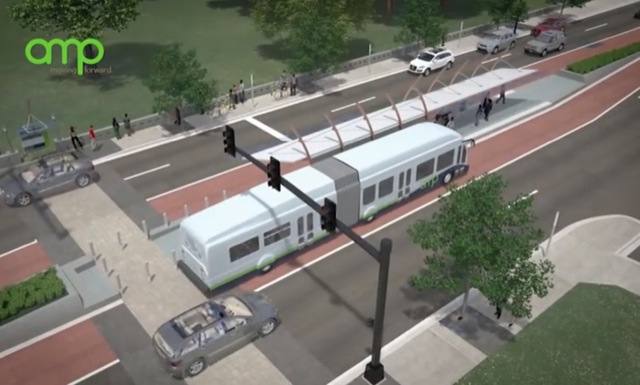Wired magazine freaks out because the Tennessee senate supposedly passed a “mind-boggling ban on bus-rapid transit.” AutoblogGreen blames the legislation on the left’s favorite whipping boys, the Koch brothers because it was supported by Americans for Prosperity, a tax-watchdog group that has received funding from the Kochs.

Not only would Nashville’s bus-rapid transit consume up to three lanes of traffic and be given priority at traffic signals, the design of stations in the middle of a major arterial will create hazards for pedestrians.
In fact, the senate did not pass a bill to ban bus-rapid transit; it passed a bill to limit the dedication of existing lanes to buses. There is no reason why buses need their own dedicated lanes, at least in a mid-sized city such as Nashville. Kansas City has shown that bus-rapid transit in shared lanes can work perfectly well and attract as much as a 50 percent increase in riders.








